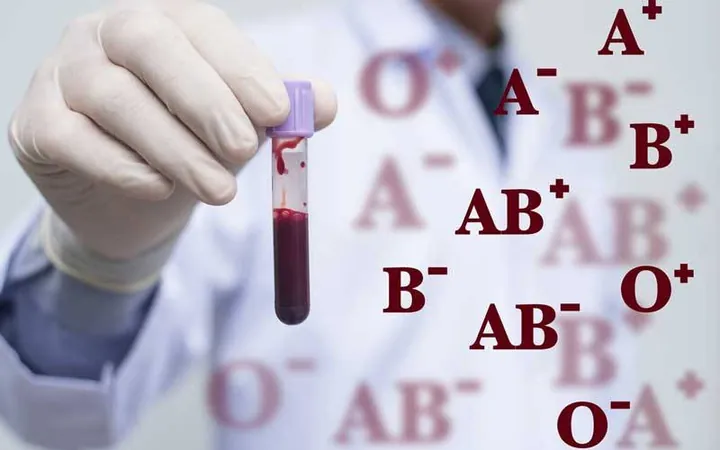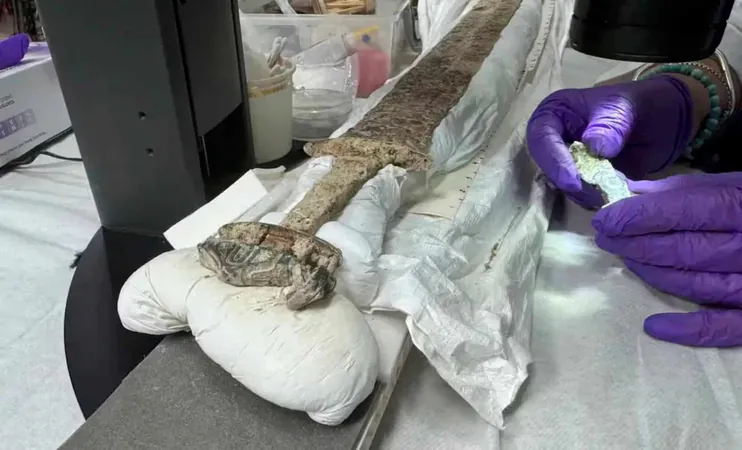
Major Breakthrough: Scientists Solve 50-Year-Old Mystery with Discovery of New Blood Group System
2025-01-13
Author: Jessica Wong
Introduction
In a groundbreaking achievement for hematology, researchers from the UK and Israel have revealed a new blood group system in humans, finally solving a medical mystery that has perplexed scientists for nearly half a century. This significant discovery, published in September, originated from a perplexing case first encountered in 1972, shedding light on the complex landscape of human blood diversity.
The Mystery Unfolds
The intrigue began with a pregnant woman whose blood exhibited an unusual characteristic: it lacked a specific surface molecule present on almost all human red blood cells. This molecule, now identified as the AnWj antigen, resulted in the classification of the previously unknown MAL blood group system, culminating decades of painstaking research. Dr. Louise Tilley, a hematologist at the UK National Health Service who has dedicated nearly 20 years to studying this rare blood variation, stated, “It represents a huge achievement and the culmination of a long team effort. This discovery enables us to provide the best care to rare, but important, patients.”
Importance of Blood Group Variations
Understanding blood group variations is crucial for safe transfusions, as defined by the World Health Organization. Although many are familiar with the ABO blood system and the Rh factor, the classification of human blood is notably intricate and extends beyond these common systems. The National Institutes of Health has documented over 30 distinct blood group systems, which are characterized by unique proteins and sugars found on the surfaces of blood cells.
Global Blood Type Distribution
Blood type distribution varies greatly across the globe. For instance, in Kenya, about 30 percent of the population is O+, the most common blood type. Globally, approximately 38 percent of people share this same blood type. However, the newly identified MAL blood group system is exceedingly rare; research indicates that less than 0.1 percent of the population lacks the AnWj antigen, making this absence particularly remarkable. Dr. Tim Satchwell from the University of the West of England noted that “MAL is a very small protein with some interesting properties, which made it difficult to identify, necessitating multiple research avenues.”
Implications for Medical Community
The implications of this discovery are enormous for the medical community. The MAL protein plays a crucial role in stabilizing cell membranes and facilitating transport. Interestingly, newborns are born without the AnWj antigen, which typically develops shortly after birth—a phenomenon that researchers are still investigating.
Future Research Directions
Furthermore, the research team identified three individuals with this uncommon blood type who lacked the expected genetic mutation, hinting that certain blood disorders may inhibit the expression of the antigen. This discovery paves the way for new diagnostic methods; testing for the MAL mutation could clarify whether a patient’s absence of the MAL blood type is due to inheritance or an underlying medical condition.
Conclusion
The World Health Organization underscores the importance of understanding rare blood types for both emergency medicine and maternal health. For patients with unusual blood types in need of transfusions, this knowledge could be life-saving. Notably, the National Institutes of Health estimates that about 1 in every 100,000 people may possess an extremely rare blood type, making ongoing research in this field crucial for public health.
As we look towards the future, this discovery not only enhances our knowledge of blood variations but also emphasizes the importance of comprehensive blood research in improving patient outcomes across the globe. Stay tuned as we continue to follow the evolution of this fascinating story!






 Brasil (PT)
Brasil (PT)
 Canada (EN)
Canada (EN)
 Chile (ES)
Chile (ES)
 Česko (CS)
Česko (CS)
 대한민국 (KO)
대한민국 (KO)
 España (ES)
España (ES)
 France (FR)
France (FR)
 Hong Kong (EN)
Hong Kong (EN)
 Italia (IT)
Italia (IT)
 日本 (JA)
日本 (JA)
 Magyarország (HU)
Magyarország (HU)
 Norge (NO)
Norge (NO)
 Polska (PL)
Polska (PL)
 Schweiz (DE)
Schweiz (DE)
 Singapore (EN)
Singapore (EN)
 Sverige (SV)
Sverige (SV)
 Suomi (FI)
Suomi (FI)
 Türkiye (TR)
Türkiye (TR)
 الإمارات العربية المتحدة (AR)
الإمارات العربية المتحدة (AR)